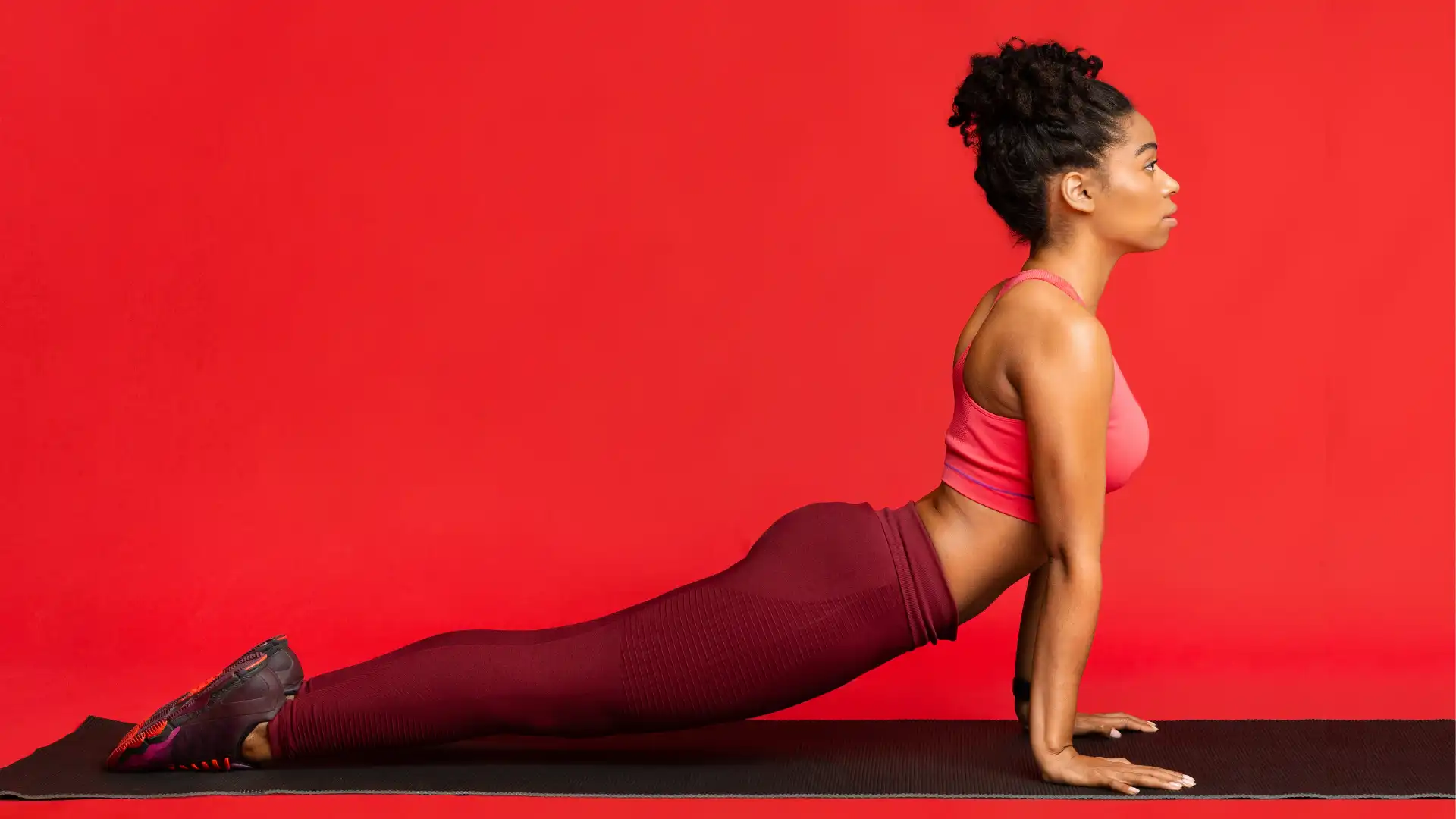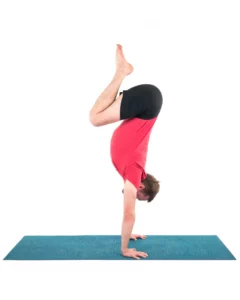Chest and Shoulder Relief: Yoga for Your “Computer Body”

Do you ever find yourself hunched over your keyboard, shoulders up around your ears and a dull ache taking hold in your upper back?
Yeah, me too.
That’s why this simple chest opening is one of my favorite five-minute yoga breaks, and also one of my favorite ways to ease into a practice.
The older you are, the more critical it is to put yourself, every day, into a position that reverses your computer posture. But it’s never too soon to start. If you work at a computer, you’re plenty old enough.
Massage Balls to the Rescue

Here are some guidelines for using massage balls to help you release shoulder tension and expand your chest:
- Sit with your buttocks at one end of your mat, and a wood or dense foam yoga block to the side, within arm’s reach, and in line with your shoulders.
- Then lie back and place the massage balls on either side of your upper spine, as close to your neck as possible. Then lift your pelvis to roll toward your head, so the balls roll an inch or two lower.
- I like to take a moment here, rolling my upper back on the massage balls. Roll up and down the spine, massaging the muscles in the upper back.
- After a few minutes, or whenever you’re ready to move on, you can try a somewhat trickier process. To lift and expand your front chest, you need to have more weight on your shoulder blades. The way to get that weight is to lift your pelvis and push into your feet.
- Push into your feet to roll the balls down your back a bit further. Make sure your shoulders are being dragged away from your ears as you continue to roll toward your head. By the time your shoulders are resting on the floor, the balls will come to the very bottom of your shoulder blades.
- With your elbows bent, palms facing inward and upper arms close to your sides, press your upper arms down into the floor to lift your chest more.
- Keep your pelvis lifted, your knees bent, and your feet hips-distance apart and slightly toed in. You will be in a supported Setu Bandha Sarvangasana (Bridge Pose).
- Now, mentally divide your hamstrings in two, crosswise, then from that line, pull your upper hamstrings toward your buttocks. That action will help you lift your pelvis higher.
- When you’re ready for a more restful pose, put the block, on its medium height, under your pelvis. Place the block widthwise under your pelvis so that it is supporting your entire sacroiliac (SI) joint. (The video below shows the block lengthwise, but placing it widthwise is more supportive for your SI joint.)
- Then relax, keeping just enough of the action in your arms to hold your chest in a broad and open position.
- Stay here for as long as you like, enjoying the freedom of breathing into an open ribcage.
Don’t have massage balls? You can also do this chest opening over a rolled blanket:
 Roll a blanket into a relatively thin roll, 4 to 6 inches in diameter. Make sure to roll it tightly so that the roll is firm and won’t squish down too much when you lie on it. Also, take care to smooth out any lumps or folds as you roll it up.
Roll a blanket into a relatively thin roll, 4 to 6 inches in diameter. Make sure to roll it tightly so that the roll is firm and won’t squish down too much when you lie on it. Also, take care to smooth out any lumps or folds as you roll it up.- Place the blanket crosswise a little bit above the centerline of the mat.
- Lie down, starting with your neck on the rolled blanket. Roll backward, toward your head, keeping enough pressure on your shoulder blades to drag them away from your ears. You’ll miss the joy of all those little massage-ball fingers in your upper back, but you’ll get the most important part—the chest opening.
More yoga basics and helpful practice tips from Eve Johnson – Yoga Strap Magic: Use a Long Strap to Put Your Shoulders in Place.
Also, read...
Tired, Achy Feet? Try These 6 Yoga Poses for Relief
Concerned about Your Posture? How Yoga Can Help
Understanding Your Sciatic Nerve Pain and How Yoga Might Help
Related courses

Eve Johnson taught Iyengar Yoga for 18 years before being introduced to Spinefulness in 2016. Convinced by the logic, clarity, and effectiveness of Spinefulness alignment, she took the teacher training course and was certified in July 2018. Eve teaches Spineful Yoga over Zoom and offers an online Spinefulness Foundations course. For course information, go to http://spinefulness.ca.



